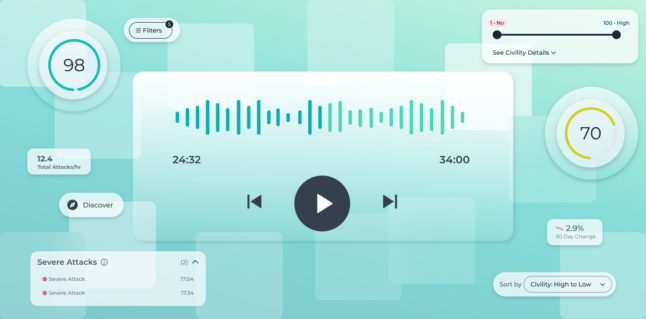The Industrial Revolution of the late 18th Century transformed society by introducing automation to many tasks. It improved productivity and increased operational efficiency, allowing everyone to work smarter, not harder.
It feels like we’re on the brink of a new industrial revolution in brand safety for advertising. Let me explain.
For years, advertisers and their agencies have been relying on blunt-force instruments to manage brand safety. These tools have largely been based on keyword blocking and inclusion/exclusion lists.
The intent of keyword blocking is to prevent a brand’s ads from appearing next to content that may be objectionable or harmful to a brand’s reputation. In theory, this makes sense but there are several problems with this technique.
First, keyword lists are generally created through a slow, manual process. Because it’s a manual process, the list does not get refreshed or updated on a regular basis. For example, I recently learned that an advertiser had placed the term “Ariana Grande” on a keyword block list after the bombing at her concert in 2017. Fast forward six years later and that term was still on the block list.
Second, keyword blocking does not take context into consideration when it’s applied. A simple example is the word, “bomb”. It can have a very negative connotation, such as an explosion, but it can also be an expression of joy: “That concert was the bomb.”
Inclusion/Exclusion lists have similar issues. The lists are often created manually and are not adjusted frequently, as they require a team to review the content on a particular website and make a decision on its suitability for a brand.
It’s also an all-or-nothing solution for a website domain—while a certain website may have some objectionable content, it may not apply to all the articles. The inclusion/exclusion process will prevent brands from advertising across acceptable content. It also unfairly penalizes certain types of websites, such as news, leading to the unintended consequence of demonetizing critical journalistic institutions that provide diversity of thought.
Keyword blocking and inclusion/exclusion lists combine to limit the potential reach for advertisers who miss out on advertising next to content that delivers a quality audience.
The adjacent area of “brand suitability” has also been limited by the use of manual processes to read and score content. Until recently, most solutions relied on humans to read articles on a particular website and then “score” them based on content quality and concerns around bias. The result has been to limit the reach in terms of the amount of content scored and use a small sample size of content to assign a score to the overall website.
The common thread with all of these applications is the fact that they have been implemented manually, much like many functions before the Industrial Revolution. Seekr’s contextual AI solution, SeekrAlign™, can address all of the limitations of these legacy systems and usher in a new era for brand safety and suitability.
1. Context: SeekrAlign uses patented contextual AI to evaluate the suitability of content through precise and transparent risk scores—reducing the false positives and false negatives that are inevitable with contextless keyword automation.
2. Automation: Seekr’s patented web crawling technology means that we can read and score content at speed and scale. Currently, we’re reading and scoring 96% of the most trafficked news sites at the article level and over 43,000 podcasts at the episode level. AI can do in seconds what takes weeks for someone reading and scoring manually.
With the recent shutdown of the Global Alliance for Responsible Media (GARM) and other brand safety issues highlighted by the recent Adalytics study, now is the time for brands, agencies, and publishers to modernize their approach to brand safety and suitability. Seekr is committed to delivering the solution.




